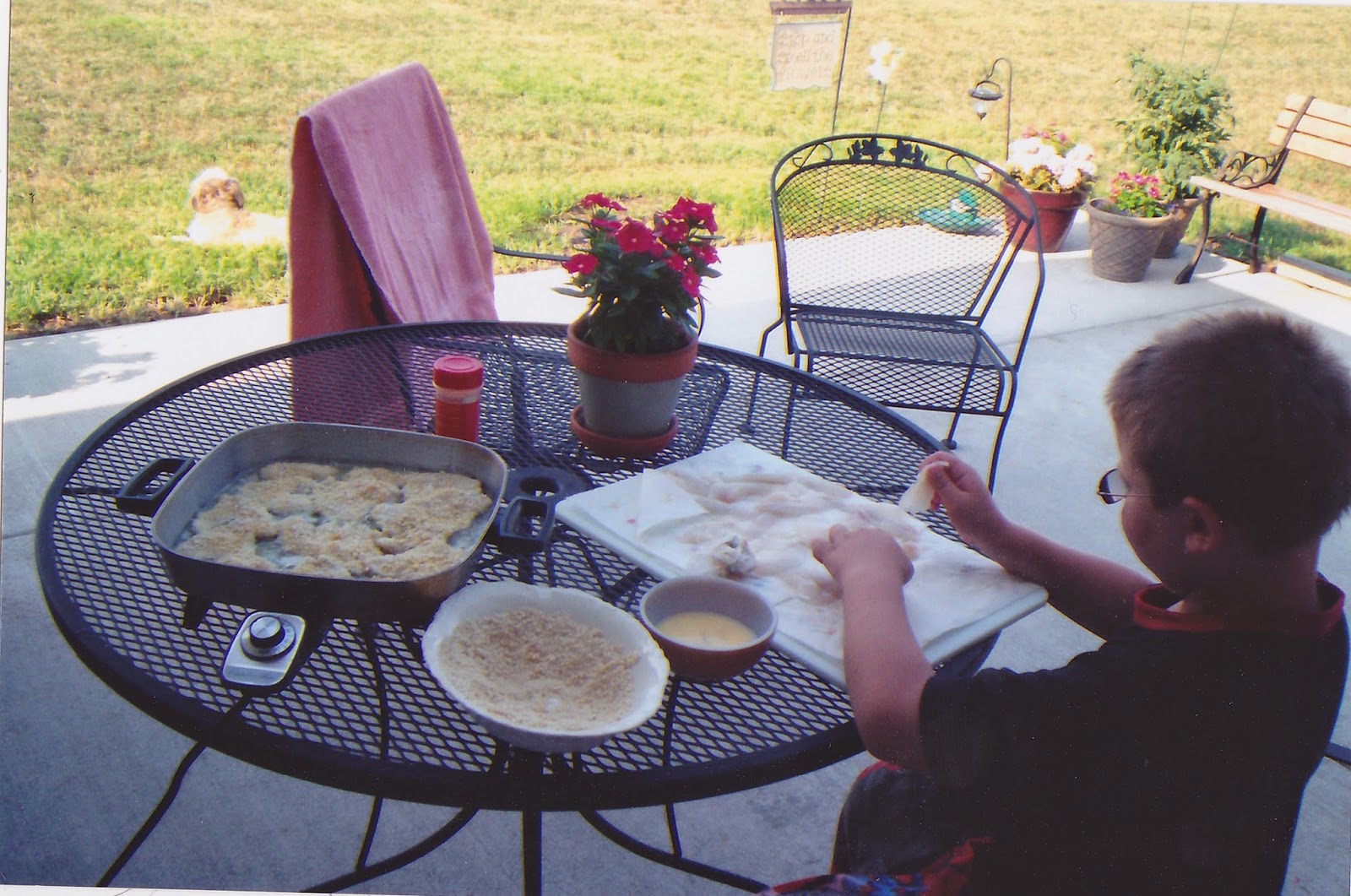My German professor calls me “Eine moderne Frau” during
certain class activities. In fact, he just called me that in our last class.
According to our limited vocabulary, I’m the epitome of a modern woman. We had
been learning how to express our favorite activities. He’d ask “Kochen Sie?” to
individuals in the class and they would reply either, “Ja, ich koche gern”
(yes, I like to cook) or, “Nein, ich koche nicht gern” (no, I don’t like to
cook). It just so happened that most of the girls in my class love to cook
elaborate healthy dishes like soy-glazed salmon and sautéed vegetables with
quinoa. So, it was a very stark contrast when I replied that no, I didn’t like
to cook. At all. “Ah, eine moderne Frau!” exclaimed my professor.
 |
| William looks simultaneously shocked & terrified that I was attempting pancakes. |
Having moved on to more complex expressions, this past class
we learned more verbs to convey our abilities, talents, and obligations. I’m
asked “Frau Kletscher, können Sie stricken?” Can I knit? My Grandma Doris, my
dad’s mom once taught me….but can I knit now? I reply, “Nein, ich kann nicht
stricken” and then I add “ich bin schlecht”. So no, I can’t knit, I’m bad at
it. Once again my professor proclaims me “eine moderne Frau.”
Am I a modern woman because my personal preferences don’t
align with certain gender stereotypes? Or is it simply because I haven’t needed
the skills that are traditionally attributed to women? I’m thinking the answer
is a combination of both.
 |
| Alice Splettstoeszer on the family's country kitchen. |
On one level, looking back into the lives of my ancestors
has brought me closer to them. On another, I see just how different my life is
from theirs, which can be an interesting distancing experience. I grew up in a
fairly large suburb. My parents’ graduating classes were smaller than any one
of my class sizes and their entire town population could have attended my high
school, with a capacity of 2500, in the same year. We buy everything from the
grocery store, except for maybe fresh fruit from the citrus trees in our yard. Though
there are small fields of alfalfa and cotton on the Native American reservation
less than 10 minutes from my house, I never grew up or worked on a farm. Most
of my grandparents had grown up on farms before they moved into the center of
the towns they raised their families in. But I grew up in Scottsdale nearly 50
years later. I don’t need to know how to knit or cook and have had to learn
other things like computer skills.
 |
| Funny article immortalized in the Splettsctoeszer Family Cookbook. |
Throughout my project, I’ve tried picturing myself living
alongside my ancestors. As noted, it’s an often distancing experience. It’s
hard to imagine my lifestyle on a farm: I stay out late attending or working
events, then sleep in on the weekend. I cook only out of necessity and prepare simple
dishes like pasta, couscous, and sandwiches—then immediately pop my dishes into
the dishwasher—or else I order late night takeout with friends. I do like to live in a clean apartment
but when I’m cleaning, I’m usually also procrastinating about schoolwork. I
love to do laundry…but these days, who wouldn’t when all you have to do is
start the machines and later fold your fresh, warm clothes?
 |
| Visiting our family friends' farm. Stan Ehrke showing us a baby chick. |
 |
| At the Ehrke's farm. William & Dad feeding a horse. |
I’ve also never really done well with livestock. I love
animals but from afar, unless there are dogs around. I’ll always remember when
our family friend practically forced me to ride the small, smelly pony at our
harvest festival in elementary school. I’ve become more accepting of horses
since then, riding on scenic trails in the desert or on a day trip to a hidden
waterfall in the Dominican Republic. But I would never own one, or any other
kind of common farm animal. I know from experience that I simply couldn’t. In
second grade, my school went to Dugan’s Dairy Farm, a milk provider for
Shamrock Farms. I don’t have fond memories of the place, and the pictures in my
class scrapbook prove it.
 |
| Things started out well. We're shown the tubes of the milking machines. |
 |
| I clearly can't take the smell of the cows behind my friend, Palmer, & I. |
 |
| My face of disgust after being coerced to try milking a cow. |
I do have a friend who is interested in agriculture. She
wants to own a farm one day in—you guessed it—Minnesota. She loves raising
animals and even had a club devoted to raising cattle for competitions during
her undergraduate years, when she also majored in agricultural studies. I think
there is something modern in that, in using her formal education and global
travels to live as a farmer or rancher in today’s world. I wonder what my
professor would think of my friend. While I take his “moderne Frau” label
lightly and I’m certain he means well, I still feel it is an interesting,
almost old-fashioned, reflection of his views; especially in a college classroom
in Los Angeles in 2014. I have grown up in a generation where I have the time
and means to pursue skills like knitting, cooking, gardening, etc. at my
leisure. My life doesn’t depend on them. That is what modern means to me;
having choices and the freedom to pick the lifestyle I desire.













